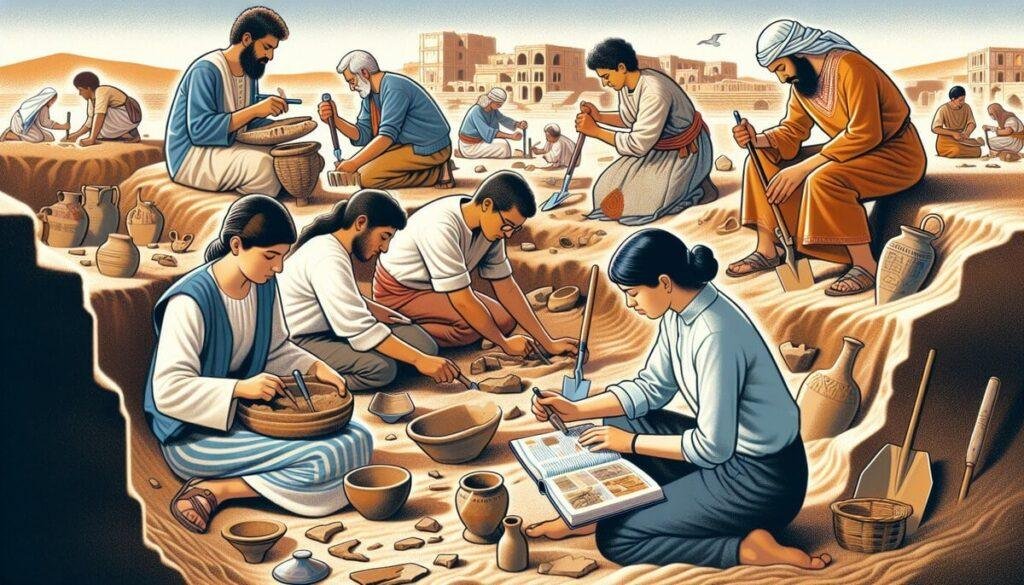What comes to mind when you hear about the Ark of the Covenant? Is it the sparkling glow of sacred relics, or do you envision ancient battles and enigmatic prophecies? This long-lost treasure has captivated storytellers, historians, and archaeologists alike. Its journey through the pages of scripture and time leaves us with many questions. Where did it come from? What happened to it? Let’s unravel this intriguing mystery together.
The Ark of the Covenant: An Overview
So, what is this Ark all about? The Ark of the Covenant is mentioned in the Bible as a sacred container that housed the tablets inscribed with the Ten Commandments, given to Moses by God on Mount Sinai. This religious artifact is shrouded in a mix of historical reverence and an aura of mystique.
Historical Significance
The Ark isn’t just an object of curiosity; it’s embedded in the narratives of the ancient Israelites. According to the Book of Exodus, it was constructed at the direction of God and carried by the Israelites during their wanderings in the desert. The Ark represented God’s covenant with His people, serving as a powerful symbol of divine presence.
- Biblical construction: Crafted from acacia wood and covered in gold, the Ark featured golden cherubim on each end.
- Portable shrine: It was designed to be carried by priests, signifying that divine presence accompanied the Israelites wherever they went.
- Historical events: It played a pivotal role in events like the Battle of Jericho, marking its importance in ancient Israelite warfare and faith.
Architecture and Design
Let’s take a moment to appreciate the meticulous details around the Ark’s design. Understanding its architectural significance offers insights into the religious and cultural values of the people who revered it.
| Element | Description |
|---|---|
| Materials | Acacia wood, gold plating |
| Dimensions | 2.5 cubits long, 1.5 cubits wide, and 1.5 cubits high (approximately 45 inches long, 27 inches wide, 27 inches high) |
| Cherubim | Two carved angelic figures, symbolizing God’s presence |
Every inch of the Ark’s design carries spiritual meaning. It reflects not just artistic prowess, but a deep-rooted understanding of the divine.
Biblical Accounts of the Ark
The biblical narrative gives us varied accounts of the Ark’s significance and its travels. You might wonder; what do these accounts reveal about the people’s relationship with the divine?
Exodus: The Birth of the Ark
The Ark finds its origins in the Book of Exodus. God commands Moses to build it after delivering the Israelites from slavery in Egypt. This act transforms it into a sign of God’s enduring promise.
- Construction narrative: Chapters 25-27 depict not only the exact specifications for the Ark but also its meaning.
- Divine instructions: It is crucial to note how these directives reinforced both the authority of Moses and the importance of obedience to divine commandments.
The Journey through the Wilderness
As the Israelites journeyed through the wilderness, the Ark guided them. Think of it as a spiritual compass leading them toward their promised land. Its presence during pivotal moments reinforced the faith of the community.
- Crossing Jordan: The Ark was carried into the Jordan River, signifying faith and obedience, as the waters parted to allow the Israelites to pass.
- Battle of Jericho: During this famed battle, the Ark was carried around the city for seven days, culminating in the dramatic collapse of the city’s walls.
The Ark in Jerusalem
Eventually, the Ark made its way to Jerusalem, where King David brought it to the city as part of his plans to build a temple. This act bolstered the religious and political significance of the Ark.
- A holy dwelling: The desire to find a permanent home for the Ark reflects the deep need for a sanctified space, connecting the community to their divine promise.
- David’s psalms: His writings during this period capture a profound sense of reverence and gratitude toward God.
The Disappearance: Where Did It Go?
Now that you’re familiarized with the Ark’s history, let’s grapple with the perplexing question: what happened to the Ark? Its disappearance has puzzled scholars and enthusiasts for centuries.
Biblical Silence
For anyone paying attention, a curious silence hangs over the fate of the Ark after King Solomon’s temple construction. The last mention of it in biblical text occurs in 2 Kings 25. After the Babylonians conquered Jerusalem, the Ark seems to vanish from history.
- Temple accounts: Scholars note that the Ark was possibly hidden or removed before the temple’s destruction.
- Prophetic warnings: Some biblical texts suggest that the Ark, in its absence, could symbolize a shift in divine favor or judgment.
Theories of Disappearance
As you can imagine, the mystery surrounding the Ark’s fate has sparked numerous theories.
- Hidden in caves: Some suggest it was hidden away by the Israelites in caves around Jerusalem to protect it from invaders.
- Transported to Babylon: Others speculate that it was taken as a trophy by the Babylonians, although there is little evidence.
- Lost to history: An equally compelling theory posits that it simply faded from historical record, its last resting place unknown.
Archaeological Insights
Archaeology often serves as our trusty companion in piecing together historical puzzles. In the case of the Ark, modern findings may hold clues, illuminating paths trodden by ancient hands.
Recent Discoveries
As you stroll through publications and excavated sites, you might encounter various archaeological discoveries. While no definitive proof of the Ark’s whereabouts has surfaced, some findings hold fascinating insights.
- Temple Mount excavations: Archaeologists have uncovered remnants of structures believed to be related to the temple built by Solomon. Though no Ark has been found, these discoveries provide context for the location’s significance.
- Artifacts from ancient Israel: Clay tablets and other ancient inscriptions lend credence to the societal and religious complexities of the time, further refining our understanding of the Ark’s role in the spiritual life of ancient Israel.
The Quest for the Ark
Archaeologists and treasure hunters alike have sparked public imagination with their quests for the Ark. The chase is thrilling, but it’s also a reminder of the poignant connection between history and belief.
- Fiction versus reality: Just like in movies, where Indiana Jones encounters the Ark, treasure hunters often face the fine line between reality and myth. The legendary status of the Ark has set unrealistic standards for what its discovery might entail.
- Academic pursuits: Many scholarly efforts aim to document the cultural implications surrounding the Ark, focusing less on the artifact itself and more on what it represents—a profound search for identity and faith.
Cultural and Theological Significance
The Ark of the Covenant isn’t merely a relic; it’s a cultural touchstone with profound theological implications. Let’s explore its deeper meanings.
Symbol of Divine Presence
For many, the Ark signifies God’s abiding presence with His people. This underscores a broader theme found throughout scripture: the relationship between the divine and humanity.
- Covenantal relationship: It serves as a reminder of the promises God made, highlighting themes of grace, loyalty, and obedience.
- Spiritual legacy: Even today, the Ark symbolizes hope, faith, and the desire for a personal connection with the divine.
Ark in Contemporary Culture
The idea of the Ark continues to spark interest today, influencing literature, film, and spirituality.
- Film portrayals: Hollywood films often romanticize the Ark, intertwining adventure with mystery. Although entertaining, these representations sometimes skew public understanding.
- Religious gatherings: The Ark serves as a focal point for both Jewish and Christian communities, symbolizing shared heritage and the enduring quest for spiritual significance.
Conclusion: Threads of Mystery and Meaning
So, where does that leave us? The mystery of the Ark of the Covenant remains, much like the echoes of ancient voices in empty temple ruins. Your keen interest reflects a desire to connect with the past, to understand not just the artifact but the faith that breathes life into it.
The enchanting tale of the Ark offers a glimpse into a rich tapestry woven from threads of history, belief, and cultural significance. It reminds us that, while the physical connection may be lost, the spiritual implications endure.
As you reflect on this enduring mystery, consider how the dialogues it sparks can inform your own journey. After all, history isn’t just about the past; it offers a lens through which to view the present and contemplate the future.


